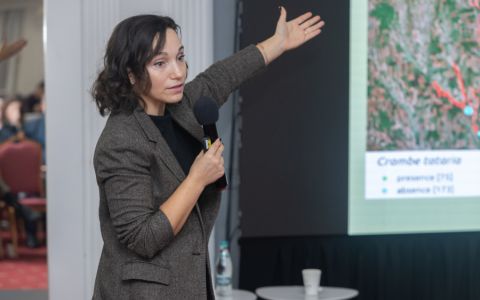PVC or polyvinylchlorid is one of the most frequently used plastic materials. It can be found basically everywhere: in our flats and houses, offices, in children´s toys, in food packages, and in hospitals, too. On one hand, it helps save human lives, but on the other hand it harms patients´ health. Head of Arnika´s campaign „Don´t Play with PVC“ Ing. Miroslava Jopková will talk on 3 October from 10 a.m. about problems and risks connected with PVC, on the ways how can we prevent such risks and about steps Arnika makes in this issue, in Mothers´ center Medvídek in town Ústí nad Orlicí (address: Heranova 1348). „Lately we could see a number of cases of poisonous substances being found in toys and other products for children. These products are often made of PVC. We want to give parents opportunity to learn more about this kind of plastic material to be able to prevent their children from potential PVC risks,“ said head of the center Kateřina Fišarová.
„Children's bodies are very vulnerable in terms of exposition to toxic chemicals which leak from PVC, for instance phthalates (1). Phthalates can for example harm reproductive system or reduce function of thyroid. Some studies (2) ascribe worsening course of asthmatic and allergic diseases to the large quantity of PVC products (more exactly, of substances leaking from this material) which surround us,“ Jopková explained why PVC is hazardous mainly for children. As she added, PVC is often used needlessly. „There is an alternative to almost every PVC product on market, with exception of some medical devices. As for toys and other products for children, usage of PVC can be avoided quite easily,“ she said.
Mothers´ center Medvídek is opened 4 days a week. Beside a regular program (Monday-Thursday morning and Wednesday afternoon) it organizes discussions on various topics 3 – 4 times a month and traditionally also spring and autumn bazaar of children and maternity cloths, sport accessories and toys, art workshops for children and parents, carnival, children´s day, farewell to summer holiday, trips etc. A course of self-defense Gaku-do – „Women, do you want to know defend yourself?“ started in September 2007.
Notes:
(1) Phtalates or esters of phtalate acid represent group of cca 40 chemicals. They are used as additives in PVC as softeners but are also used in cosmetics, in agriculture as insecticides or as adhesives. Use of the most hazardous kinds was limited in production of toys and other children products or in cosmetics because of negative health effects. These six most hazardous phtalates are: di-isononyl phtalate (DINP), di-n-octyl phtalate (DNOP), di-iso-decyl phtalate (DIDP), butyl benzyl phtalate (BBP), dibutyl phtalate (DBP), di(2-ethylhexyl) phtalate (DEHP). Other information about phtalates is on: https://arnika.org/ftalaty. Main risk related to them is in their negative impact on hormonal and reproductive systems as well as on the liver, kidneys, lungs and on blood condensability.
(2)Tuomainen, A. et al. Experimental PVC Material Challenge in Subjects with Occupational PVC Exposure. 2005. http://www.pubmedcentral.nih.gov/articlerender.fcgi?artid=1570076,
Bornehag, C. G. et al. The Association between Asthma and Allergic Symptoms in Children and Phthalates in House Dust: A Nested Case-Control Study. 2004.






